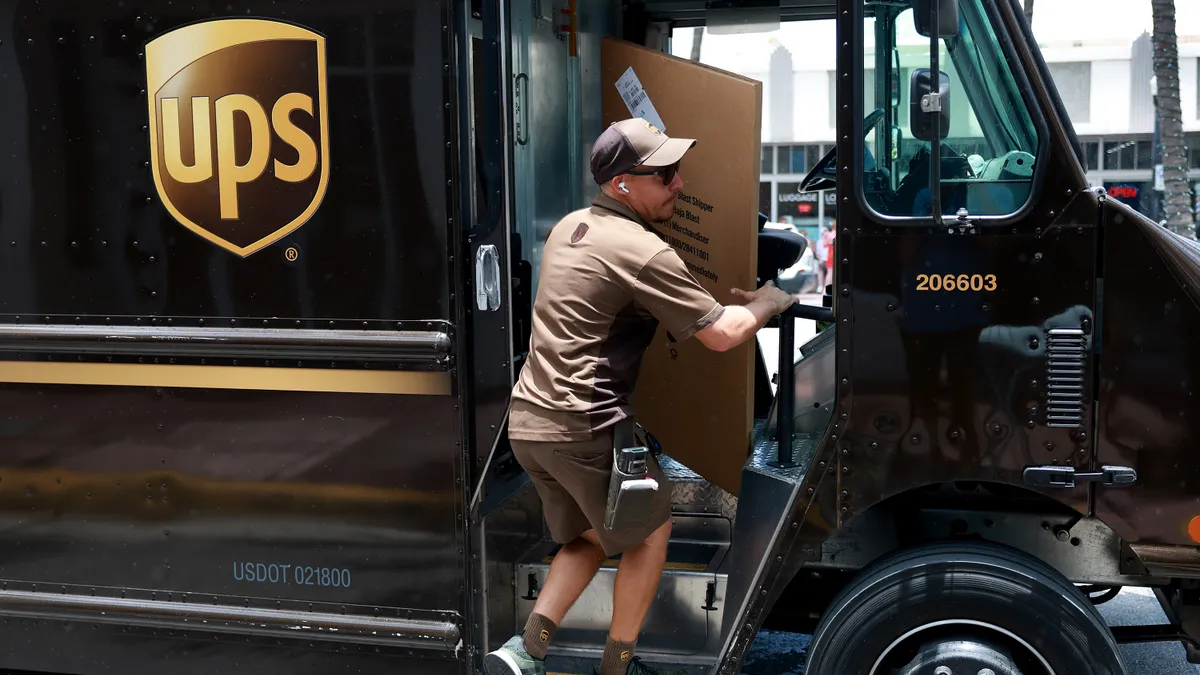Many retailers breathed easier following the news Tuesday that UPS and the Teamsters had tentatively reached a deal.
The Retail Industry Leaders Association, which had recently warned that uncertainty around a possible strike was “kryptonite” to supply chains and advocated for a resolution to the talks ahead of next week’s deadline, called the handshake agreement “an enormous relief to retailers” and urged its “quick ratification and adoption.”
“With a work stoppage now taken out of the equation, retail supply chains can continue firing on all cylinders to deliver for consumers across the country,” the group said in an emailed statement.
National Retail Federation CEO Matthew Shay on Tuesday called UPS “a major partner of the retail industry” and said the “timing of this agreement is critical for consumers and families during the peak back-to-school shopping season.”
“Retailers rely on stability within their supply chains, and this agreement will bring long-term stability, as well as assurance to the millions of businesses and employees who rely on smooth and efficient last-mile delivery,” he said in a statement.
Still, the groups also noted that the agreement has yet to be ratified by rank-and-file union members. Inna Kuznetsova, CEO of supply chain planning and optimization firm ToolsGroup, noted that in 2018, most of the union members who voted on a deal forged with UPS voted against it, and those that abstained from the vote said it was because it was too much of a compromise.
This time around, Teamsters locals representatives will meet Monday to review and recommend the agreement, then voting runs from Aug. 3 to Aug. 22, according to sister publication Supply Chain Dive. To be ratified and implemented, each agreement — the national master contract deal as well as supplementals — requires a majority to vote “yes.”
“As they say, it isn’t over until it’s over,” Kuznetsova said by email. “We may still see another episode or two in this series when they vote at the end of the month. But whatever the outcome is, it’s important for retailers and other businesses affected to recognize the ongoing nature of volatility in the supply chain space and take the necessary actions to improve their ability to sense and manage change.”













